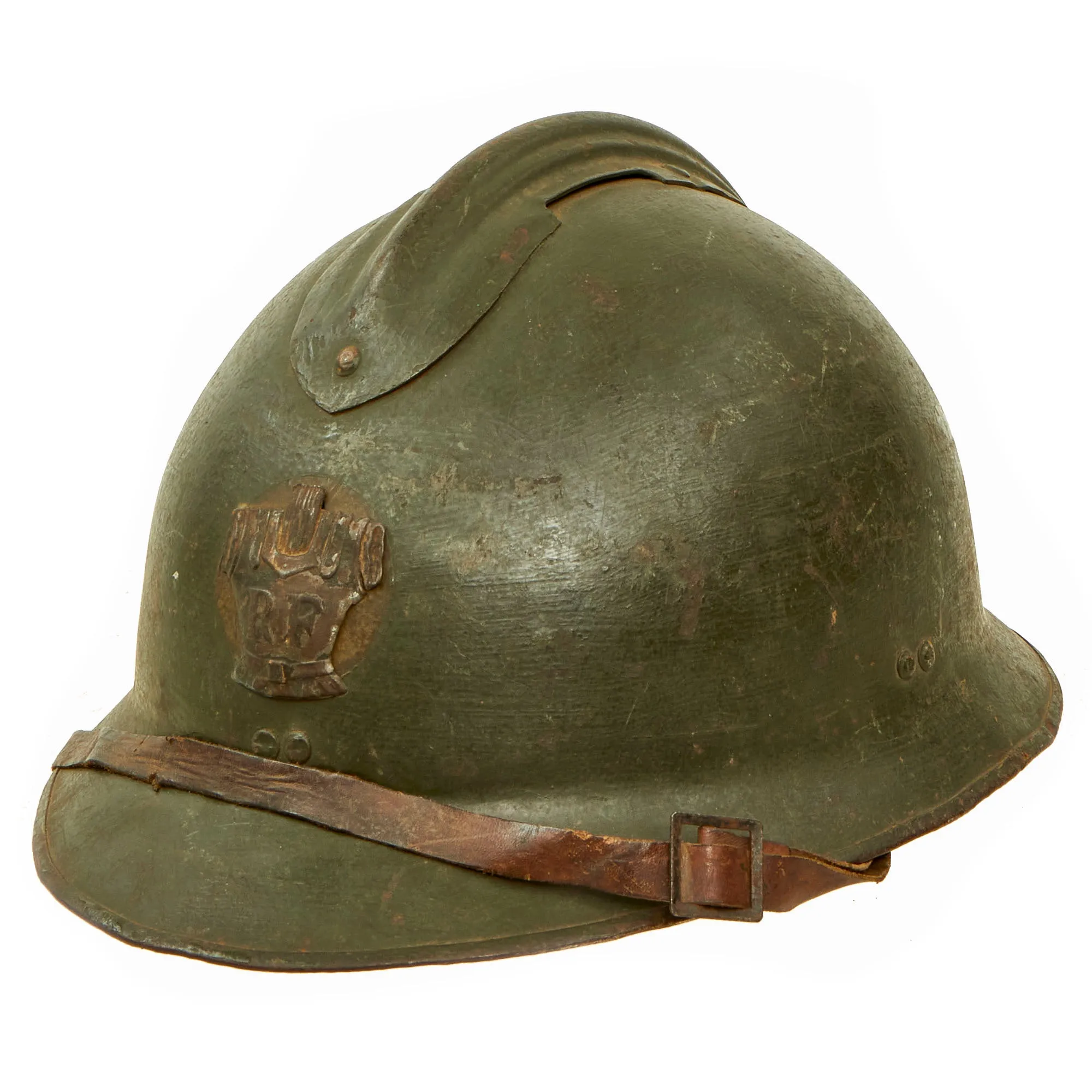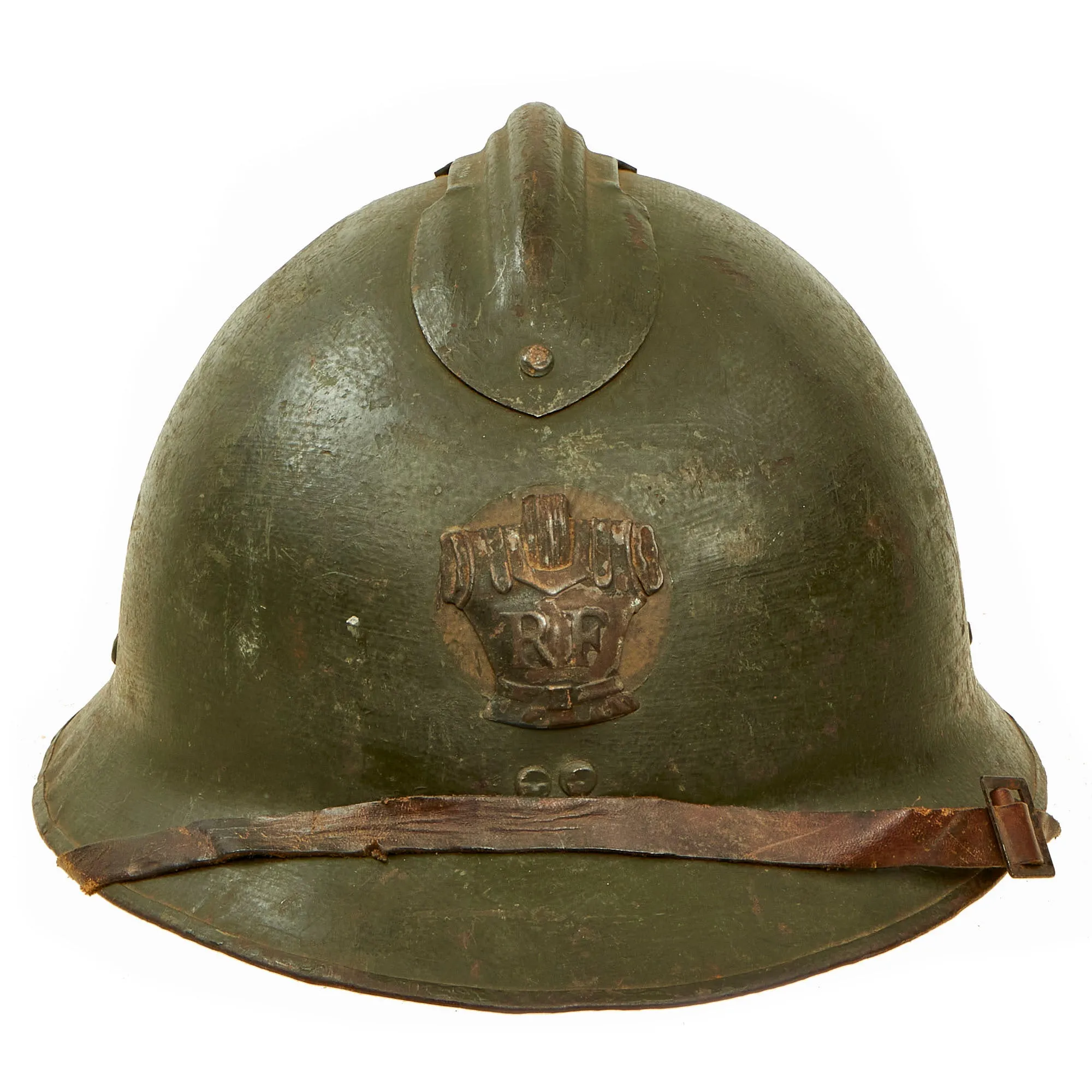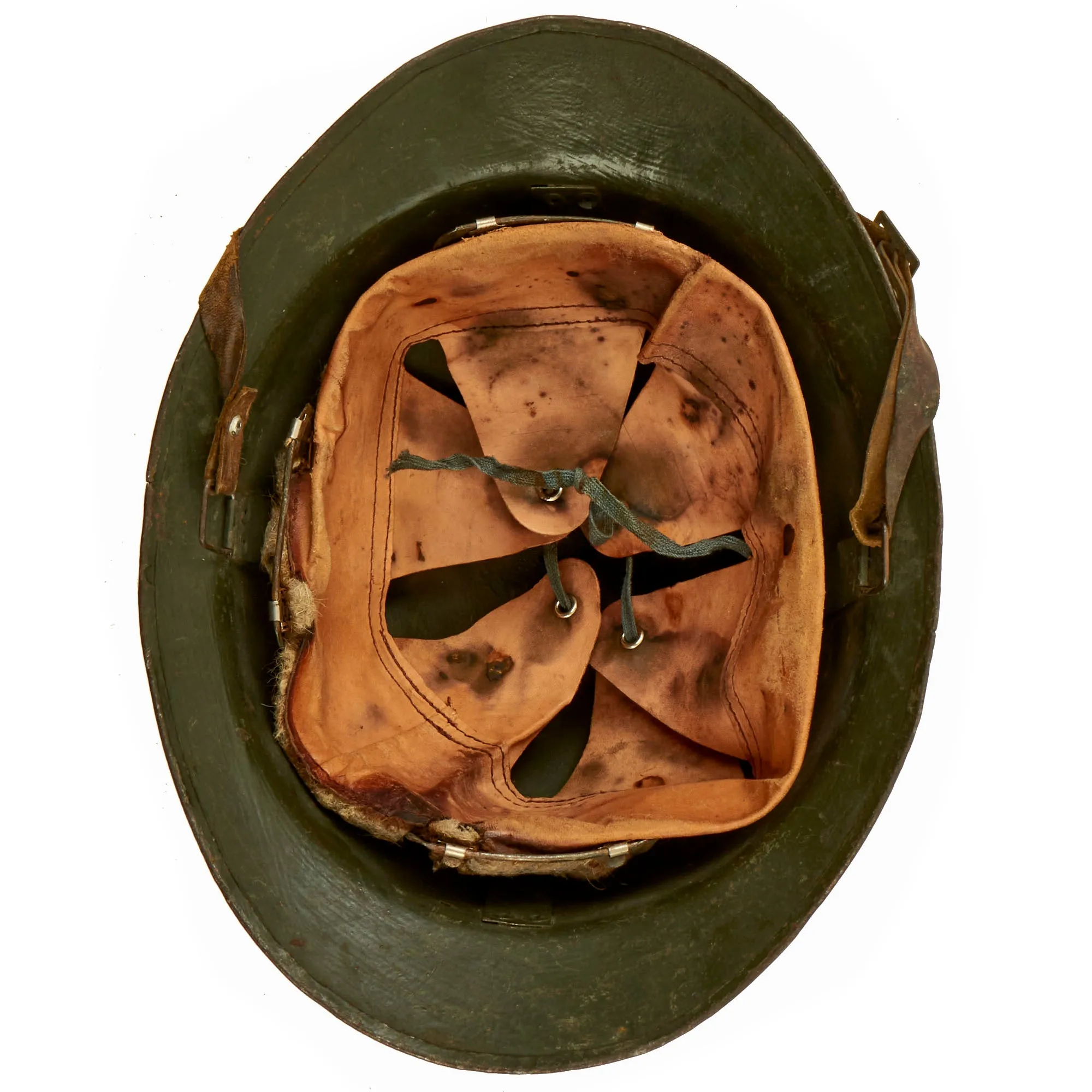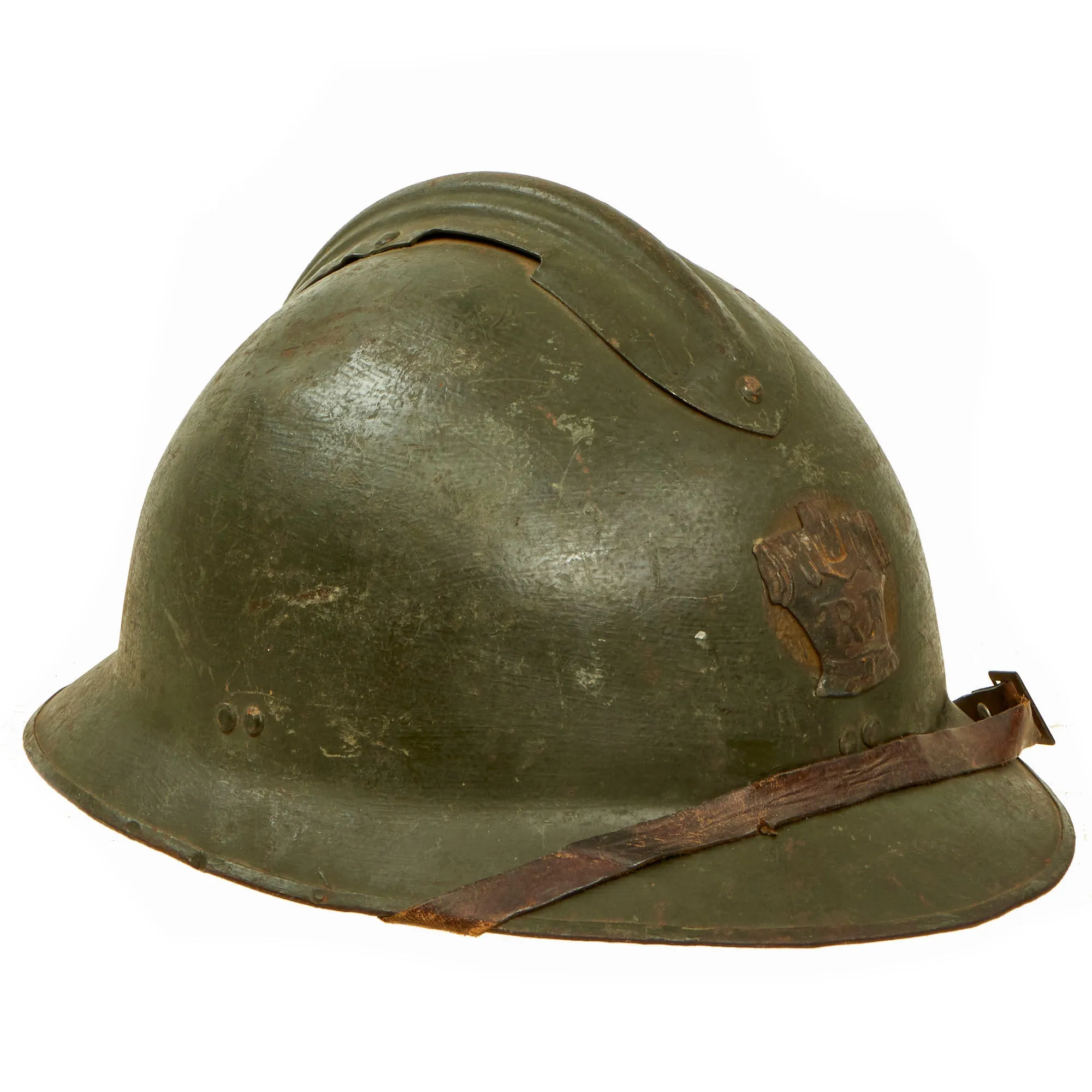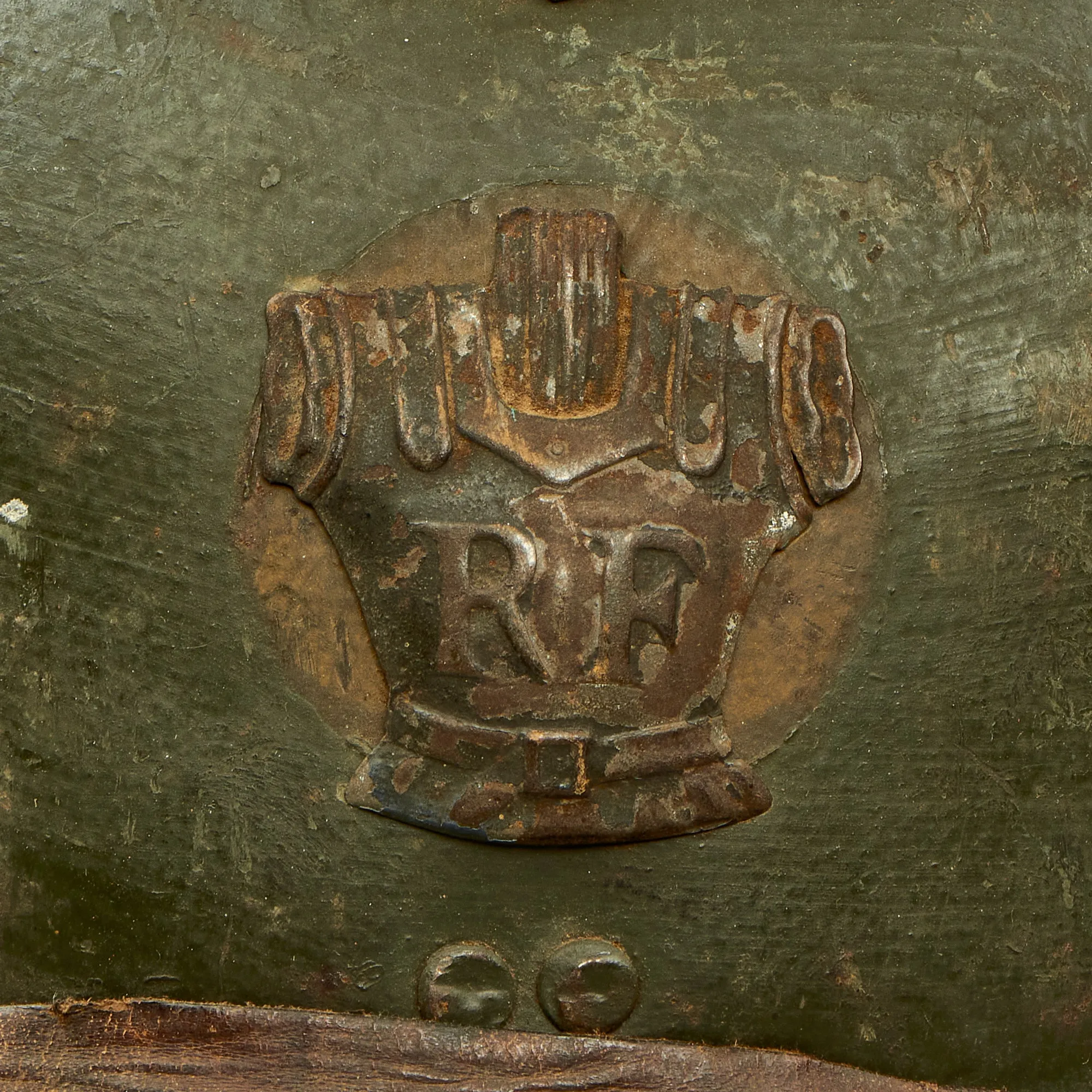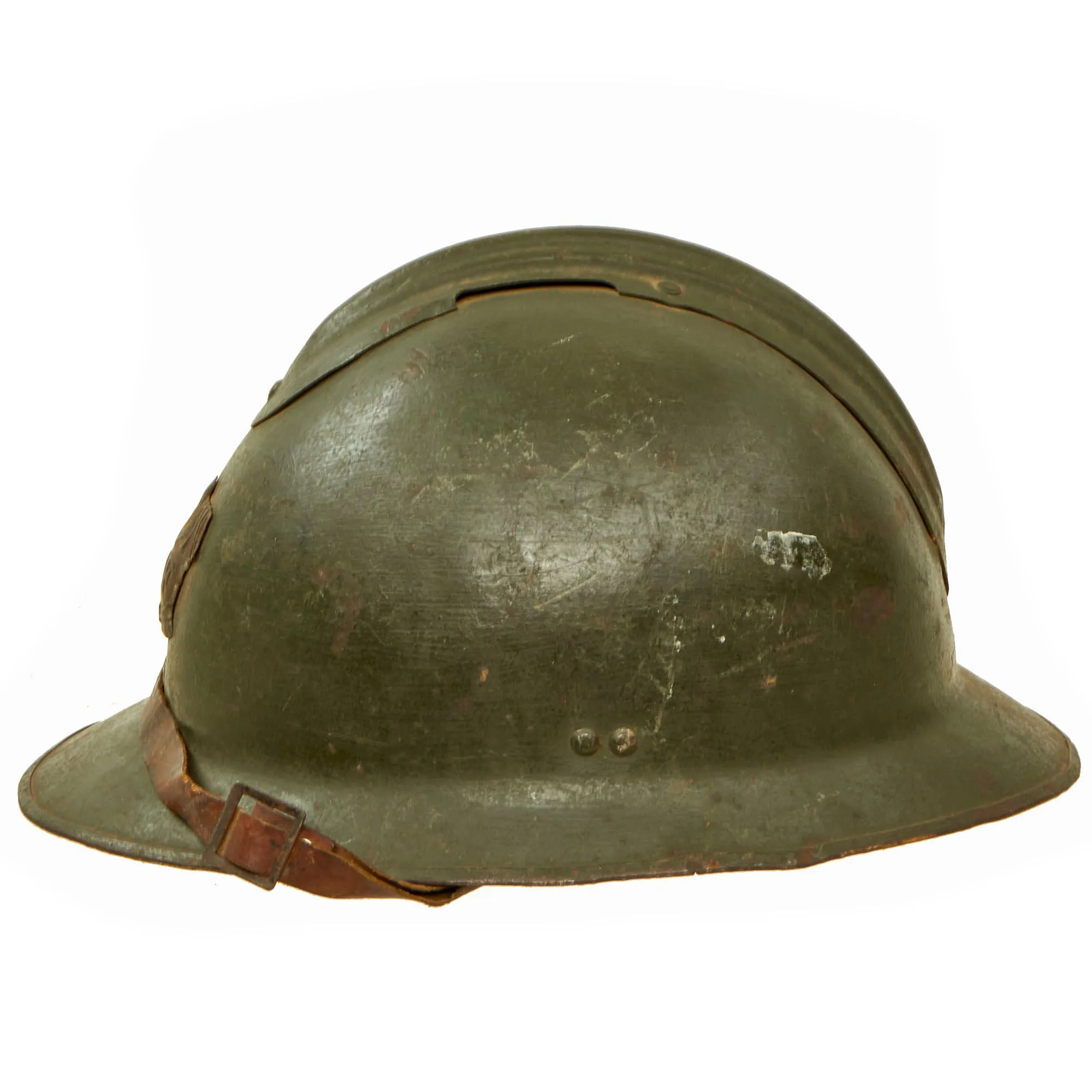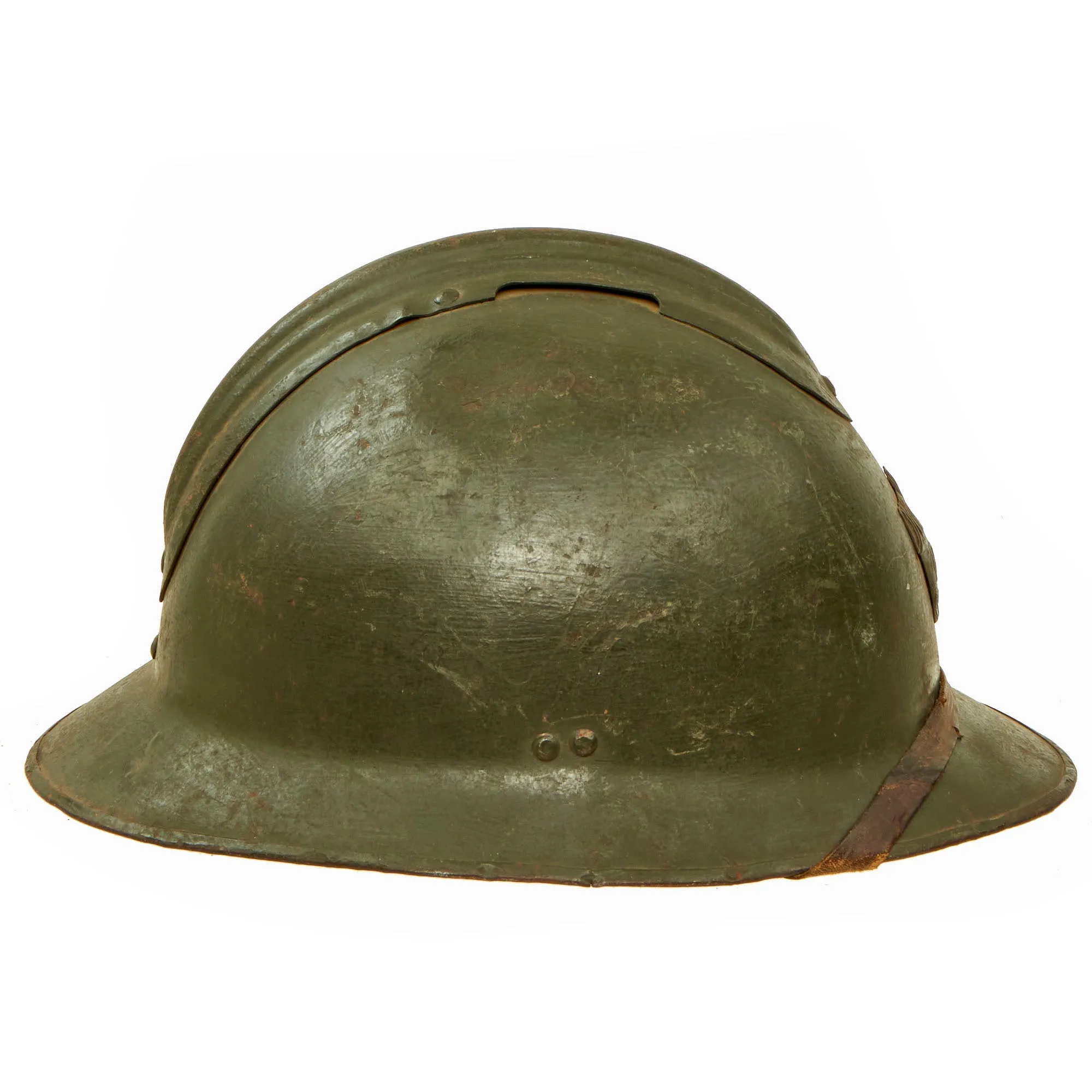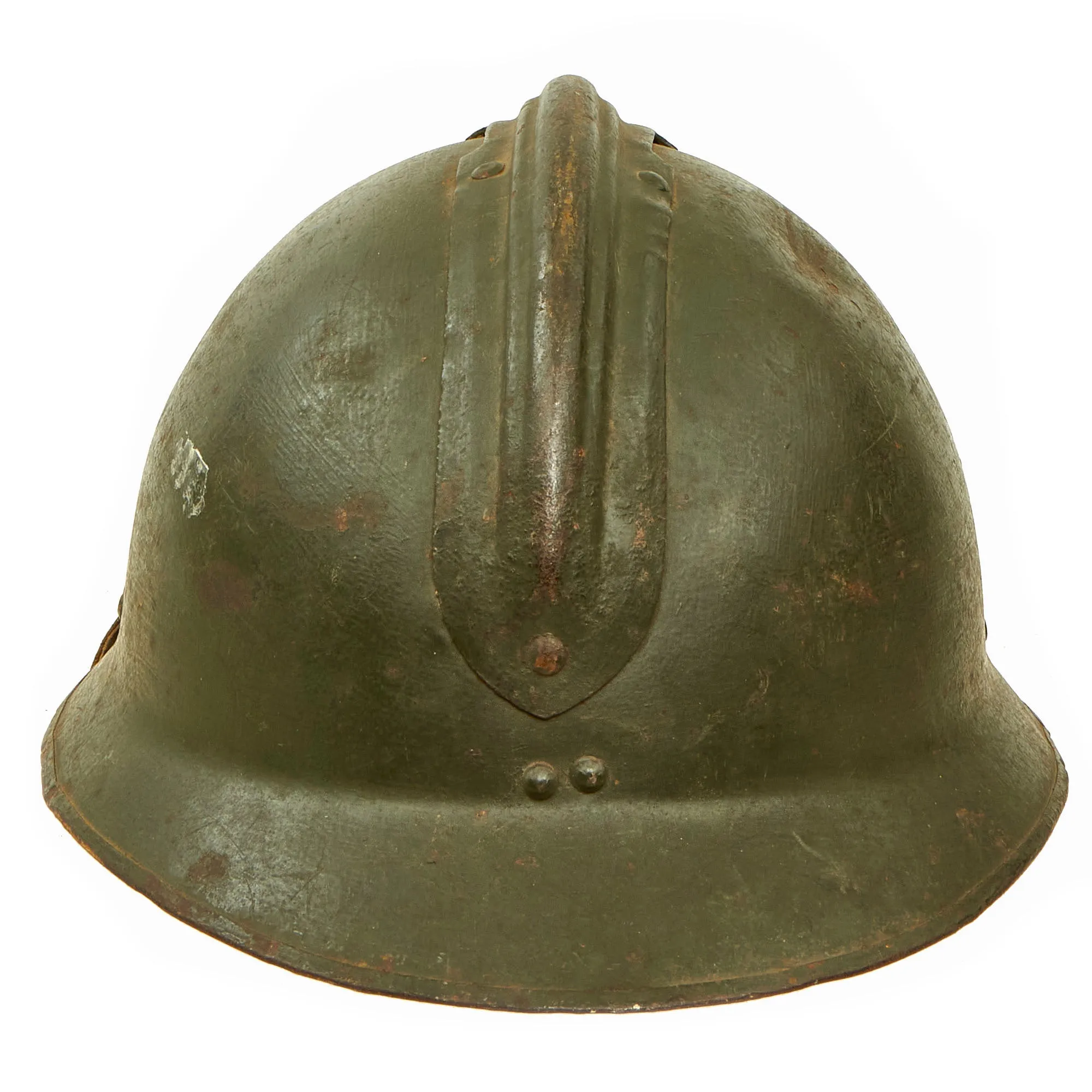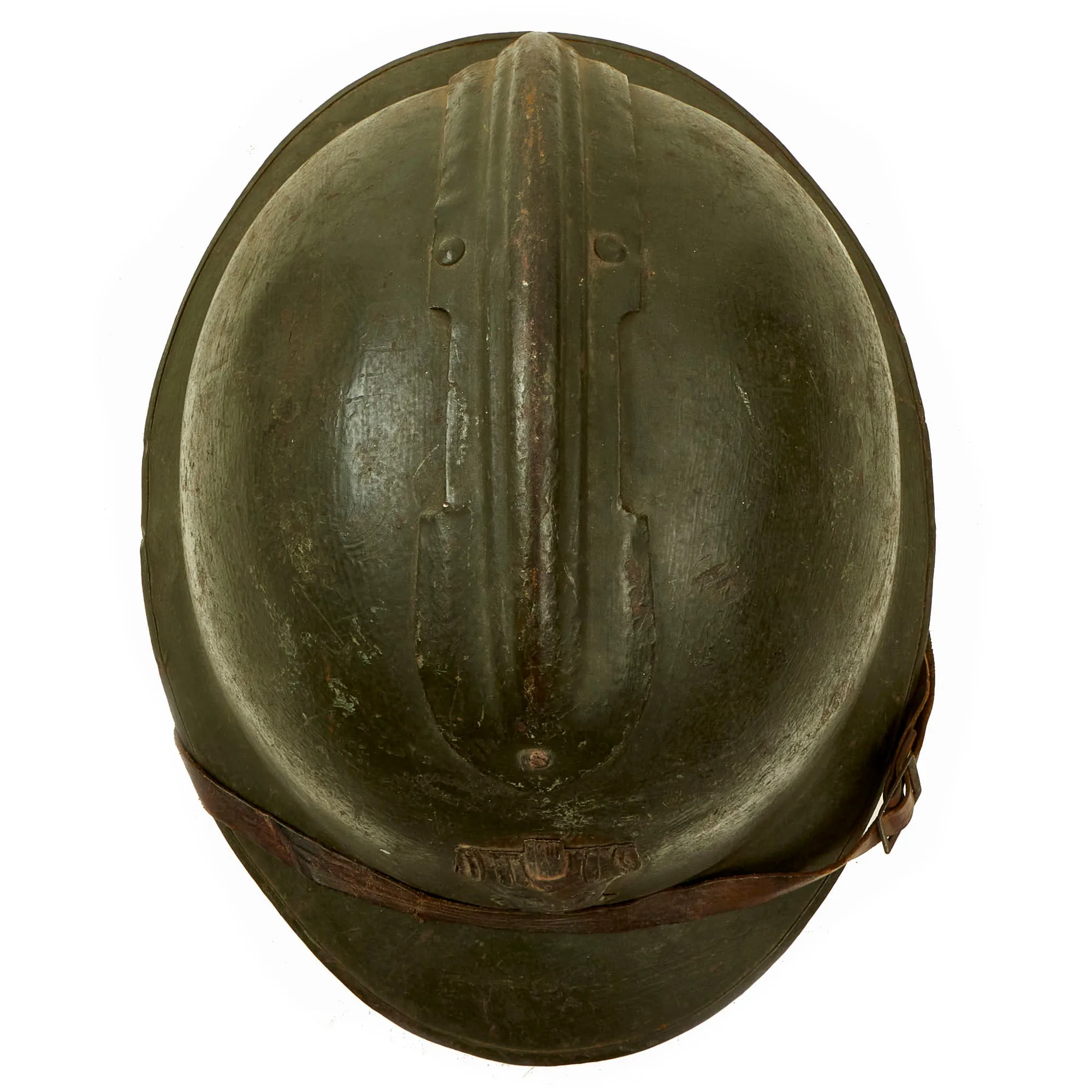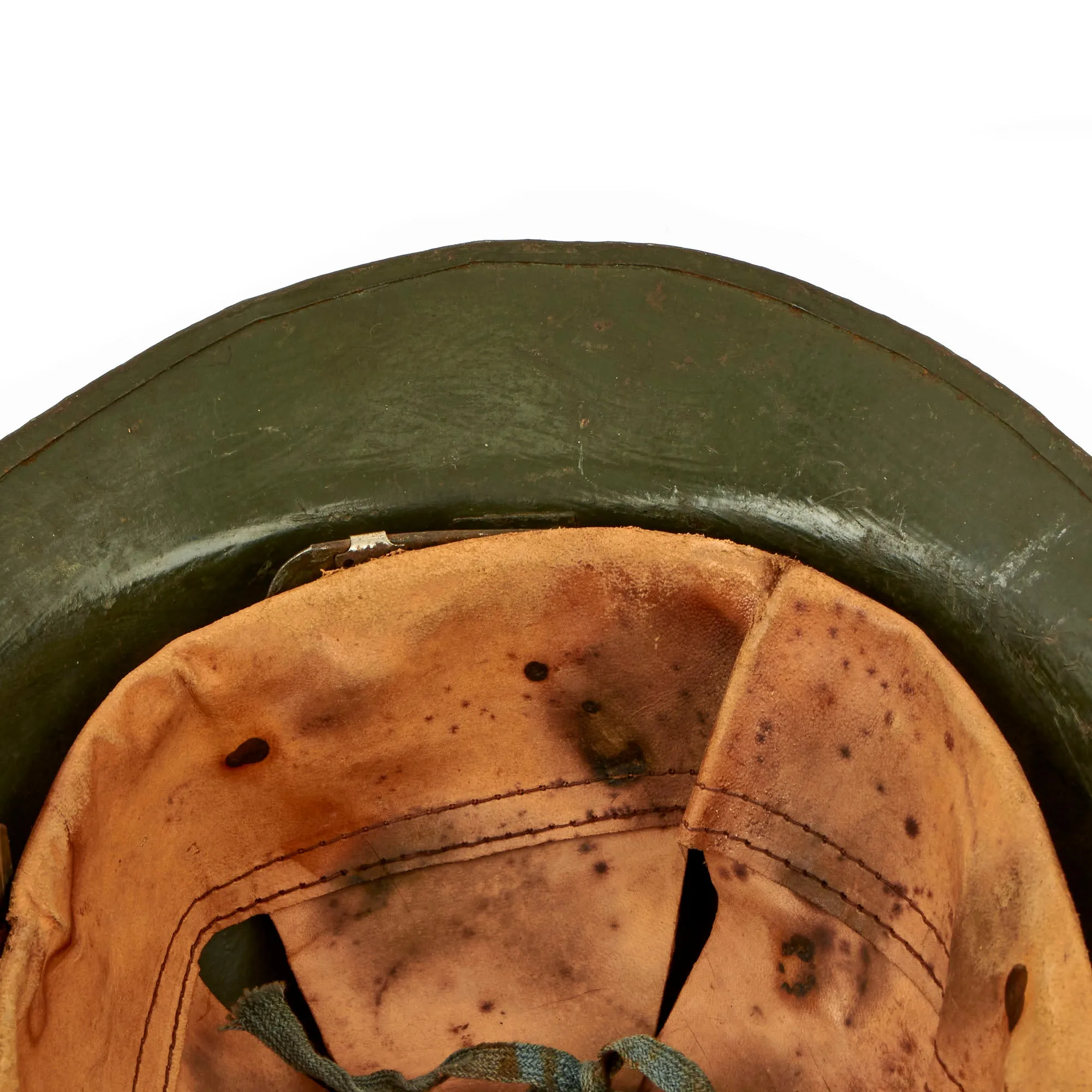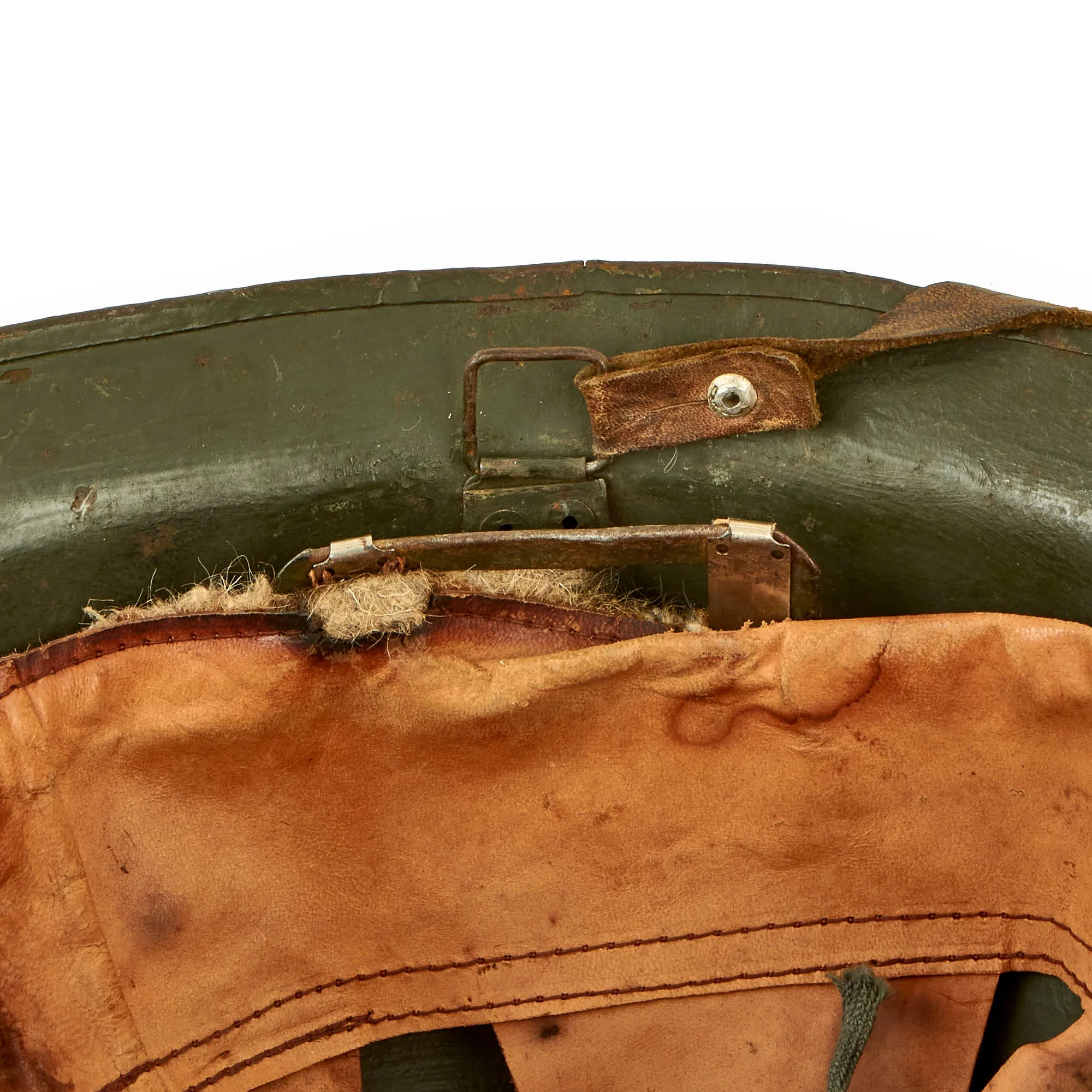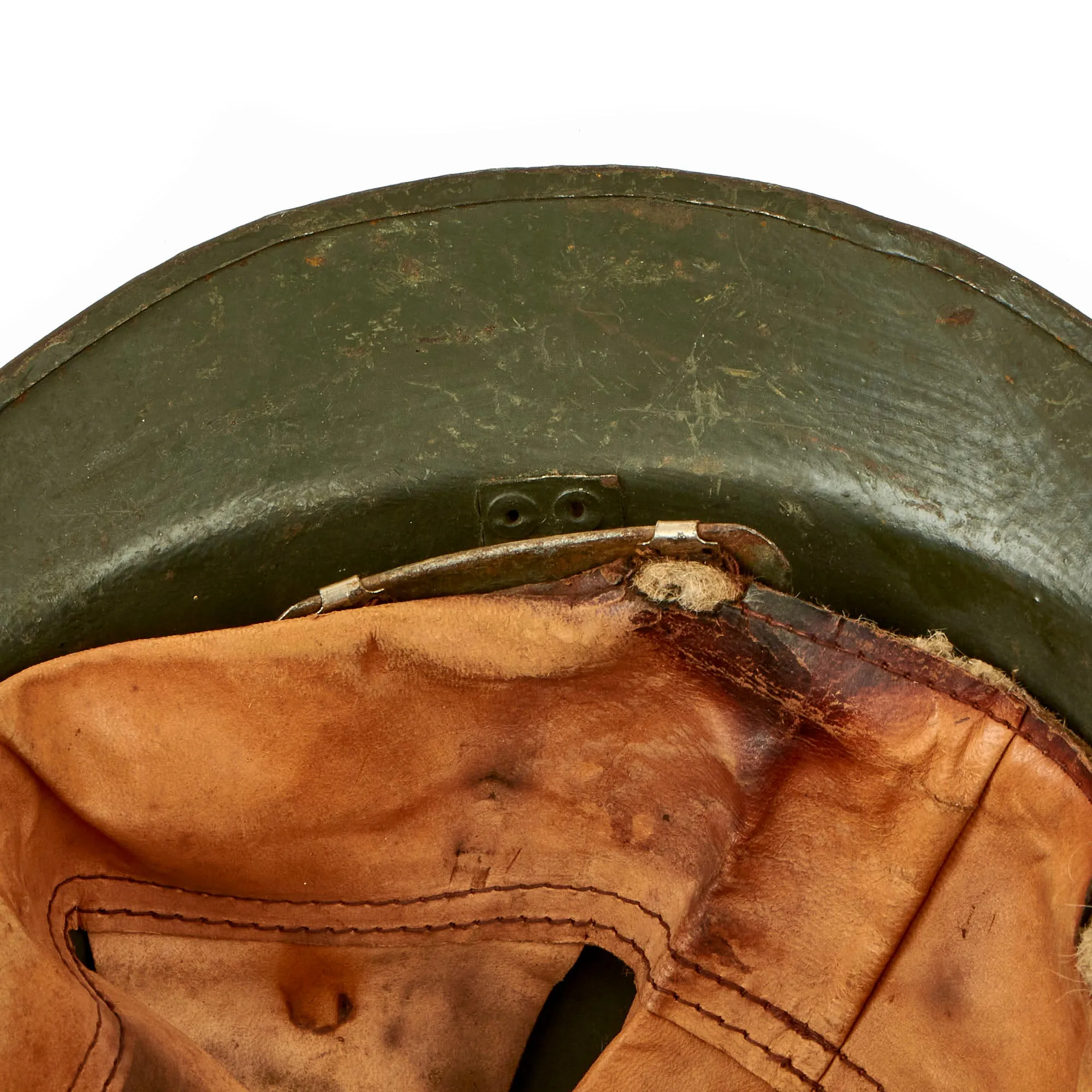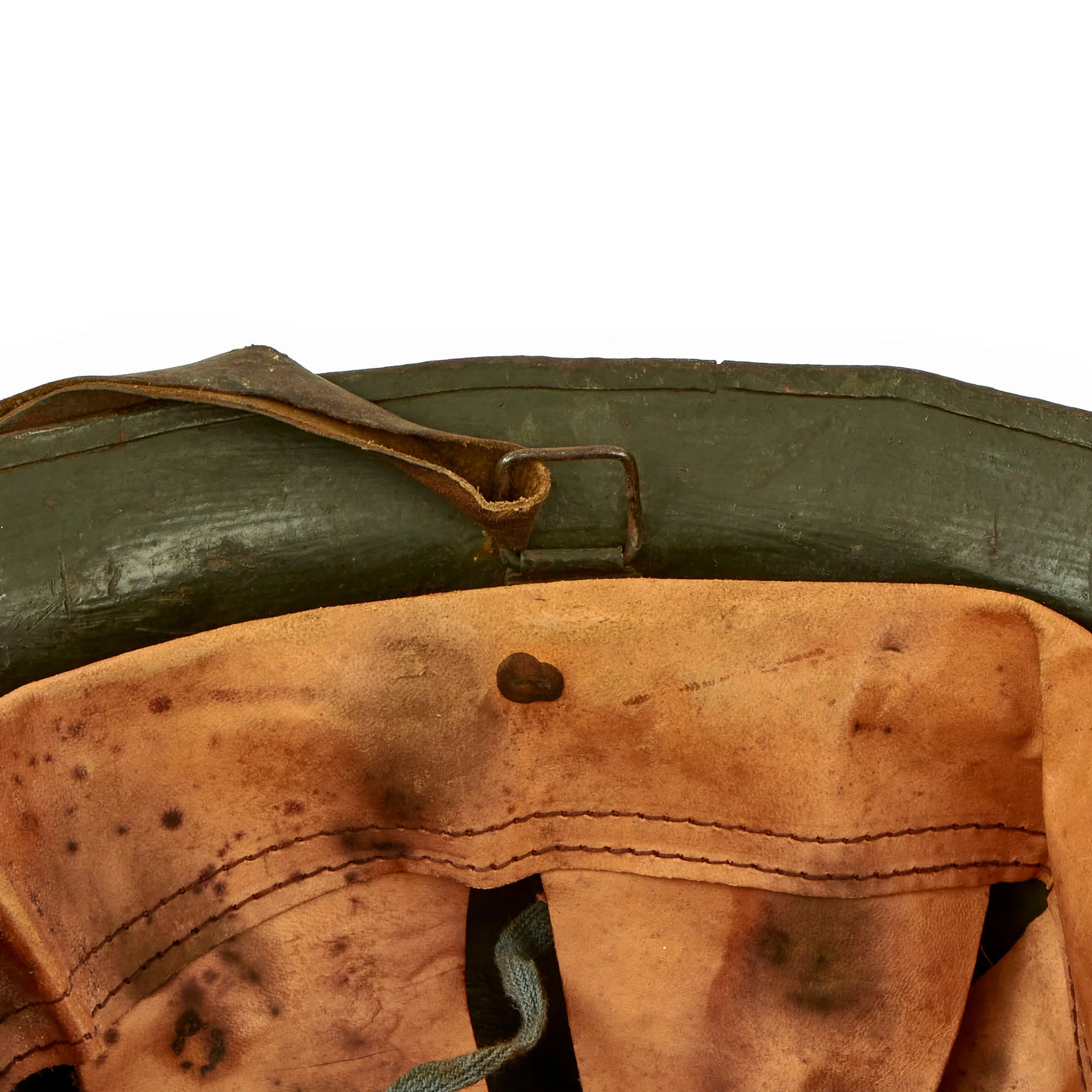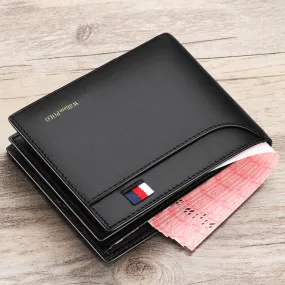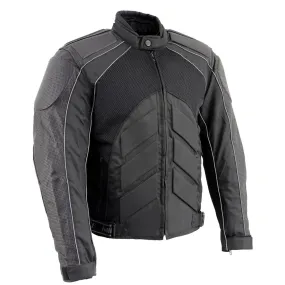Original Item: Only One Available. This is a very good condition genuine World War II M1926 French Army Infantry "Adrian" helmet. The badge has the standard R F on the "Cuirass with a Helmet on a Pole", for Republique Francaise, but unfortunately the helmet broke off and is missing entirely. This is the badge used on standard Combat Engineer issue helmets. There are definitely some dents in the top of the shell, and the helmet has a period repaint over this damage, after which it has had additional wear and oxidation to the shell, especially around the rim.
Size is approximately US 7 (56cm). Features an original leather liner in very good condition, though some of the attachment stitches are a bit loose with one detached and there is cracking in the finish. The chin strap is also present, though worn and cracked.
This is a great chance to get an original WWII Era French helmet!
In 1926 the Adrian helmet was modified by being constructed of stronger steel and simplified by having the main part of the helmet stamped from one piece of metal, and therefore without the joining rim around the helmet that characterizes the M15. The large ventilation hole under the comb, which had been a weak point of the old design, was also replaced with a series of small holes. The M26 helmet continued in use with the French Army until after World War II, and was also used by the French Police up to the 1970s.
During the interwar period Belgium began to produce their own domestically made M26 Adrians and exported them around the globe. These helmets can be distinguished from their French counterparts, because they have a slightly different comb and a wider rim.
In other countries the Adrian-type helmets were also in use with the fire-fighting units, railway guards or marine infantry (e.g. Japan's SNLF). Adrian helmets are still prized by collectors today.
The M15 Adrian helmet (French: Casque Adrian) was a combat helmet issued to the French Army during World War I. It was the first standard helmet of the French Army and was designed when millions of French troops were engaged in trench warfare, and head wounds from the falling shrapnel generated by the new technique of indirect fire became a frequent cause of battlefield casualties. Introduced in 1915, it was the first modern steel helmet and it served as the basic helmet of many armies well into the 1930s. Initially issued to infantry soldiers, in modified form they were also issued to cavalry and tank crews. A subsequent version, the M26, was used during World War II.




